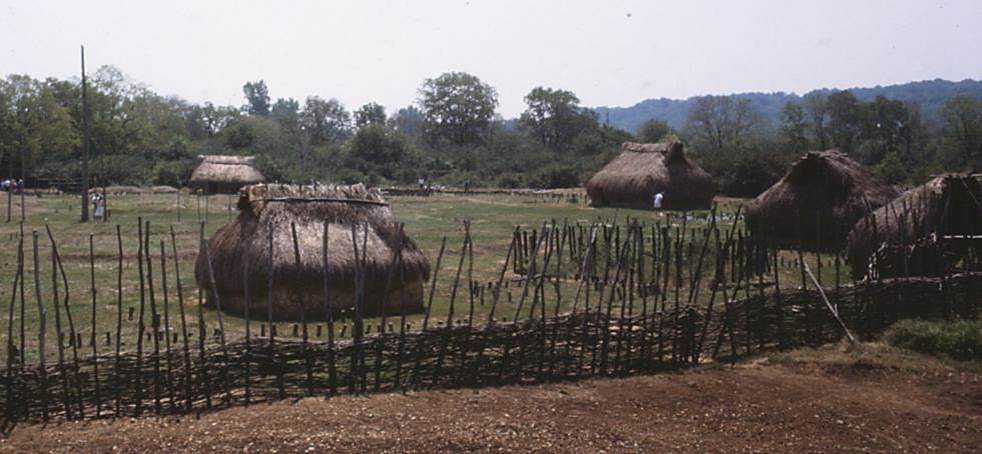“Show me your teeth and I will tell you exactly who you are.” So wrote Georges Cuvier, the father of paleontology. In my July column in the Columbus Dispatch I summarize the work of archaeologist Robert Cook and physical anthropologist Scott Aubry, both of the Ohio State University, who studied the teeth of ancient American Indians from four sites in southwestern Ohio that together encompass nearly the entire span of the Fort Ancient culture. Cook and Aubry focused on teeth for the Cuvierian insights they could reveal into who these people were. Specifically, they hoped to learn where these ancient men and women chose to live once they got married. Cook and Aubry acknowledged that there wasn’t necessarily a “rigid rule” that dictated postmarital residence patterns, but in many societies there is a strong preference for either patrilocal residence, meaning the married couple would live in the husband’s home community, or matrilocal residence, which means the couple would settle in the wife’s home community. From precise measurements of the teeth, Cook and Aubry were able to determine that in early Fort Ancient societies, people tended to be partrilocal. By the middle Fort Ancient, people had shifted to being matrilocal. And in the late Fort Ancient, the societies appear to have been multilocal, meaning that people opportunistically connected “with kin on either side of the family.” Cook and Aubry link these changes in social norms and customs to changes in technology and diet. Early Fort Ancient folk principally were hunters and gatherers who supplemented their diet with maize. By the middle Fort Ancient, there had been a shift to a full commitment to maize agriculture supplemented by hunting and gathering. Hunting and gathering societies tended to be patrilocal, whereas indigenous agricultural societies tended to be matrilocal. Lewis Binford, in a landmark 1962 paper, conceded that “we cannot excavate a kinship terminology or a philosophy,” but he affirmed that we “can and do excavate the material items which functioned together with these more behavioral elements within the appropriate cultural subsystems.” Theoretically, therefore, we ought to be able to work out the connections between the material culture components that we find in the archaeological record and the behavioral elements that produced those objects and their arrangements in space. Once we understand those connections, we should be able to infer the underlying behaviors from the material items. Cook and Aubry demonstrate that human remains can provide a more direct linkage to the behavioral elements of broad anthropological interest, which so far have proven to be hard to get at using only material items recovered from archaeological sites. The human remains that Cook and Aubry studied are curated by the Ohio History Connection, the Cincinnati Museum Center, the Dayton Society of Natural History, and the Peabody Museum of Archeology and Ethnology at Harvard University.
The four sites studied by Cook and Aubry are Turpin, Anderson, SunWatch and Madisonville. Turpin is the oldest. It’s located near the mouth of the Little Miami River. Anderson, farther upriver in the Little Miami valley, and SunWatch Village in the Great Miami River valley, are the next oldest. Madisonville is the most recent and is located just north of Turpin in the Little Miami River valley. According to Cook and Aubry, “Madisonville was the largest and most densely occupied of the four villages (more than twice the size of Anderson and SunWatch with multiple plaza patterns) and appears to be a product of the aggregation of earlier Fort Ancient sites that formed largely as populations from upriver villages moved in.” I think it’s amazing that the cusps and curves of teeth can be translated into the postmarital residential patterns of ancient cultures. On the other hand, based on Cuvier’s insight, why should this be so surprising? As Roy Lewis put it, in his hilarious novel of human evolution What we did to Father (or, as it was called in later editions, The Evolution Man) — “there is nothing an evolving animal worries more about than how his teeth are getting along.” For further reading Binford, Lewis R. 1962 Archaeology as anthropology. American Antiquity 28:217-225. Cook, Robert A. 2007 SunWatch: Fort Ancient Development in the Mississippian World. University of Alabama Press, Tuscaloosa. Cook, Robert A. and B. Scott Aubry 2014 Aggregation, interregional interaction, and postmarital residence patterning: a study of biological variation in the Late Prehistoric Middle Ohio valley. American Journal of Physical Anthropology 154:270-278.

SunWatch Village has been partially restored by the Dayton Society of Natural History. It is a sort of colonial Williamsburg for ancient Ohio a wonderful place to learn about our American Indian pre-contact history.
Brad Lepper
Note: This post has been edited to reflect errors in the identification of the locations of the four sites relative to the Great and Little Miami rivers. The map (Figure 1 in Cook and Aubry 2014) is incorrect, but I’m embarrassed I didn’t catch the error. Thanks to John Sommer for informing me of the mistake.